
By Micheal Rios, Tulalip News
Last issue, in celebration of Native American Heritage Month, we highlighted the educational exploits of one soon-to-be Tessa Campbell, Ph.D. who is actively indigenizing space on the University of Washington campus. This issue we turn our celebratory gaze to the awe-inspiring artistry of James Madison and a towering story pole installed on the banks of Lake Washington.
One of Tulalip’s master carvers, James is celebrated not only for his dedication to preserving our rich cultural heritage but also for his exceptional skill and craftsmanship in wood carving. His expansive portfolio, especially his soaring story poles, exemplifies his mastery in the art of Coast Salish carving and his commitment to upholding the stories and iconic imagery of his ancestors
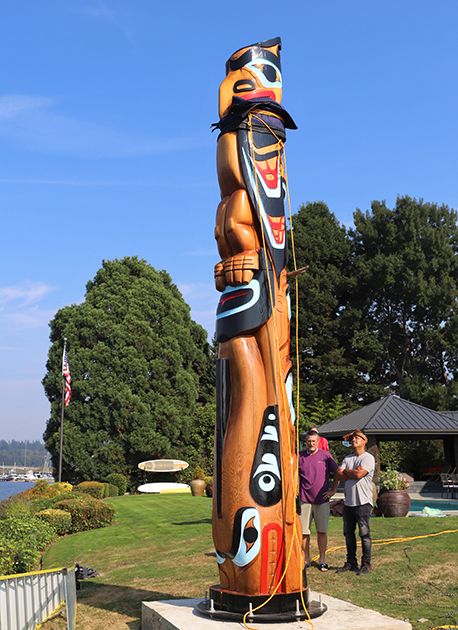
“I started learning how to carve at 5-years-old. Some of my earliest carving memories are from when I’d be dropped off at my grandma Lois and grandpa Frank’s house every day during elementary,” recalled the now 50-year-old James in an episode of Hibulb Conversations. “I’d basically receive my culture teachings from them in the morning, before going to school at Whittier Elementary, then continue the culture teachings with them after school. Back then, my grandpa would carve around the kitchen table. He’d sit me down with my cousin Steven and we would watch and learn.”
James comes from an artistic family that spans multiple generations and includes both Tulalip and Tlingit forebearers who were deeply rooted in cultural traditions and storytelling. They used a variety of tools and elements that were at their disposal at the time to display their most valued aspects of culture through art.
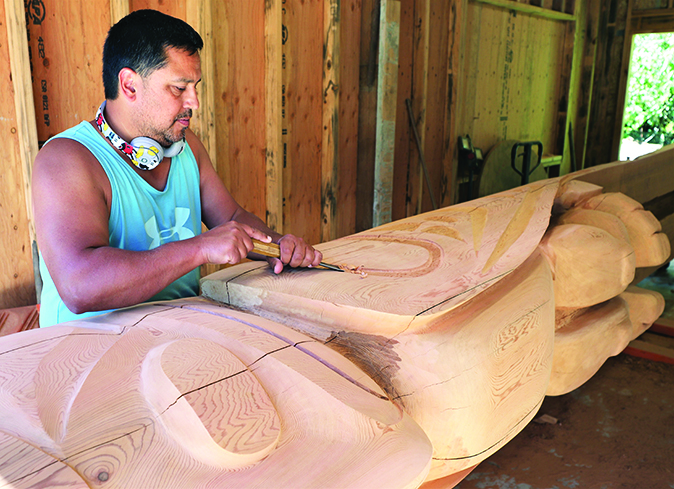
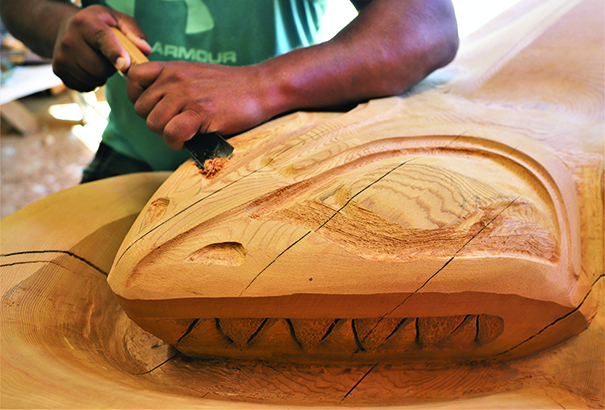
Within the modern competitive art scene of the 21st century, true masters of their craft seek to expand beyond the confines of what art should be and, instead, revel in the opportunity to express what art is. An ever-evolving perspective that isn’t limited by palette nor medium, Native American artists are always seeking innovative methods to highlight heritage like those who came before them.
“I always dreamt of being an artist like my grandpa and father before me,” admitted the Tulalip master carver. “There was a Haida artist named Bill Reid, who I never actually met in person, but he had a profound impact on me through his books filled with northwest coastal art and stunning sculptures that were 15- to 20-feet large. When I was young, his books were accessible to me and I’d look through them constantly; studying his technique and visualizing what I’d do if I had the ability to create things larger than life.”
Out of that larger than life vision has sprung a stunning, one-of-one story pole. The core of a 600-year-old Red Cedar tree has been intricately hand-carved into a traditional story that has been passed on from one generation to the next. Depicted in the 20-foot tall, 2,000-pound pole is a traditional tale passed on from a grandfather to his grandson during one of those aforementioned culture teachings as child.
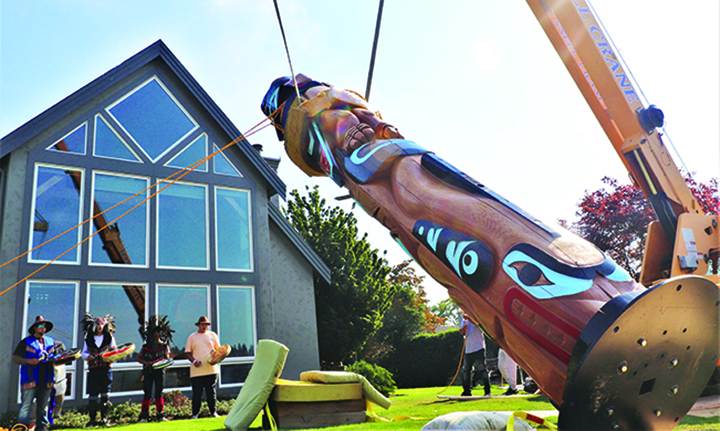
“My grandpa used to tell me this story about Thunderbird and Black Fish, which depicted the origins of Snoqualmie Pass,” explained James moments after the pole’s raising. “A long time ago, there used to be thunderbirds flying in the sky. When they flapped their wings, they made lighting and thunder. Black Fish swam in the ocean, but would come to the surface from time and time and jump out when necessary to gather. Whenever Thunderbird and Black Fish saw one another, they’d become jealous of what the other could do. One could fly and one could swim.
“They would bicker to each other and brag about which ability was better, swimming or flying. One day, they just had enough of each other’s talk and decided to fight. Thunderbird swooped down from the sky as Black Fish leapt from the water and they met in mid-air. They tussled around, fighting each other, until they eventually landed on the mountains. They continued their tussle, crushing their way through mountainous rock down until they reached the water. Thunderbird soared back into the sky and Black Fish propelled itself back into the ocean. What their fight created was a path over the mountain that we know today as Snoqualmie Pass.”
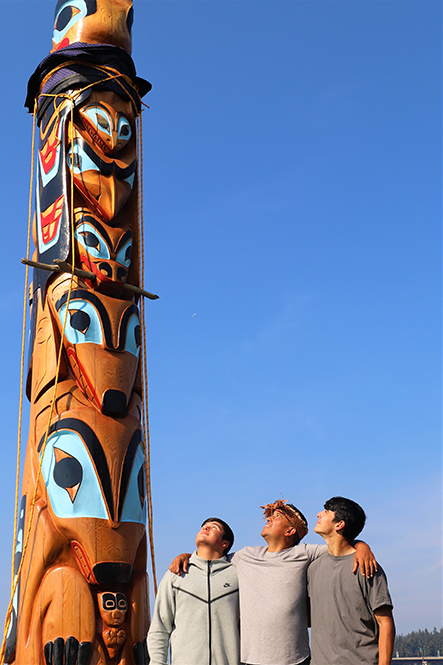
It took James one full year of meticulous carving with various tools and techniques, from chisels and adzes to sanders and finishing tools, to complete this story pole. His control over each tool further demonstrates his mastery, allowing him to achieve the deep textures, contours, and details that give his cedar formed figures life and meaning.
Behind the story, literally on the pole’s back, are six animals that were requested to represent the commissioner’s family. Seahawk, bear, sea otter, wolf, shark, and beaver totems only add to the cultural significance the pole represents in the heart of Coast Salish territory. Through artistic vision, James and his fellow master carvers are creating a future in which our culture thrives and inspires. They are connecting the past, present and future through an enduring art form – storytelling in wood.